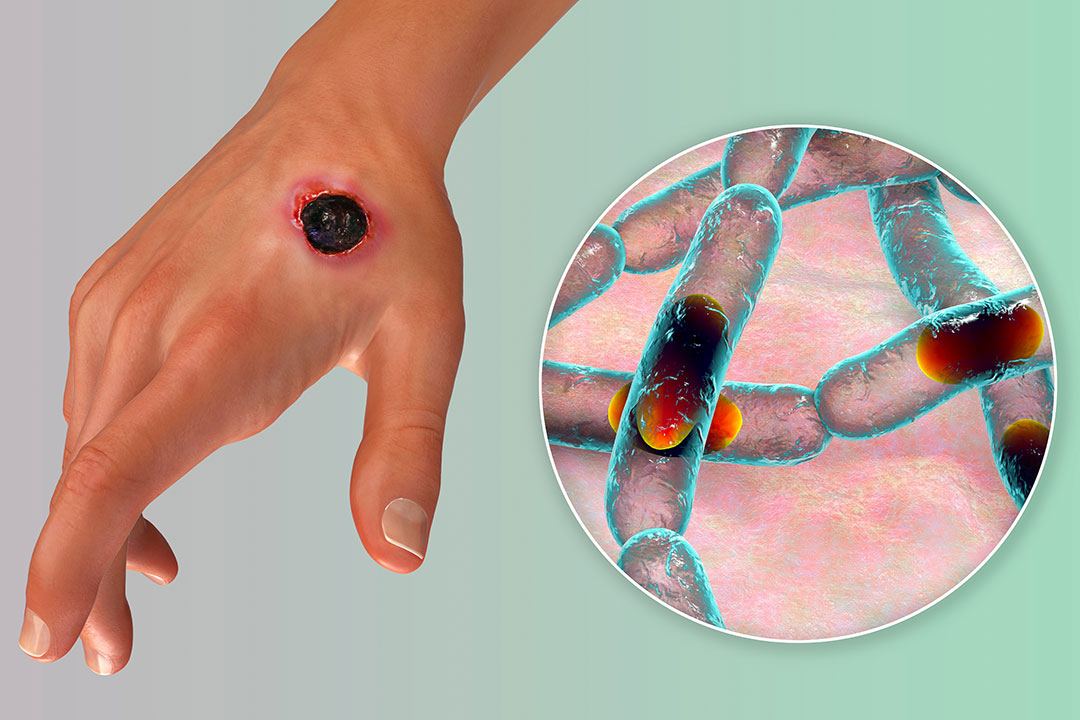
NIGERIANS, much endeared to eating cowhides (ponmo in local parlance) and bushmeat, should take the latest official health advisory on the deadly anthrax disease with the utmost seriousness. In an ominous alert, the Federal Ministry of Agriculture and Rural Development warned that following an outbreak of anthrax in some neighbouring West African countries, Nigerians should shun these meats. It highlighted the dangers associated with consuming ponmo, smoked meat and bushmeat, having been linked to the disease in northern Ghana, Togo, and Burkina Faso. For many Nigerians, this is likely a bitter pill to swallow as these ‘yummies’ are widely consumed across the country.
Cow skin especially, is the staple of the masses, because of its relative cheapness, and in a country where 133 million are ‘multi-dimensionally poor,’ often the only meat that many can afford. Bushmeat is also popular in the rural areas.
A rare ailment, anthrax is a zoonotic disease – it affects animals and man. The bacterial disease is transmitted to humans when they are exposed to infected animals or when they consume the contaminated meat of such livestock. Mammals cited include cattle, sheep, goats, camels, and antelopes. Meat from these animals is widely consumed in Nigeria. The authorities therefore have a tough battle on their hands.
Health experts state that anthrax often re-emerges at the onset of the wet season. This is concerning because the rainy season is now in full swing. The ministry named Sokoto, Kebbi, Niger, Kwara, Oyo, Ogun, and Lagos states, whose borders are not far from Ghana, Burkina Faso, and Togo, as the most vulnerable to an outbreak in Nigeria. Prevention is the best antidote. Therefore, the FMARD, the Nigeria Centre for Disease Control and the states’ health ministries must step up efforts to prevent the disease from infiltrating the country.
Experts say the symptoms are flu-like, including cough, fever and muscle aches. If not diagnosed and treated early, it leads to pneumonia, severe lung problems, and difficulty in breathing, shock, and death. At greater risk are people who handle animal products, military personnel, travellers, and laboratory professionals.
Thankfully, anthrax can be treated with antibiotics and is not contagious. This means it cannot spread from man to man, which mitigates the incidence. In the 2014 outbreak, seven deaths were recorded worldwide.In 2016, there were one human and 2,300 animal deaths. The FMARD says many deaths have been recorded in the latest outbreak but did not give specific casualty figures.
Strong, firm, proactive action is therefore needed because Nigeria is disease-prone. In 2014, the Ebola virus disease ensnared Nigeria when a Liberian traveller, Patrick Sawyer, beat the country’s porous airport surveillance system. The disease claimed eight lives, including that of Stella Adadevoh, the medical consultant credited with stopping Sawyer from spreading the virus and wreaking greater damage.
Six years after, from 266,675 cases, the NCDC said Nigeria recorded 3,155 deaths in the COVID-19 outbreak. Nigeria is the worst place for under-five children in the world, with 95,000 deaths of the 619,000 malaria fatalities globally in 2021. Indeed, at 31.36 per cent in 2021, Africa’s most populous country leads globally in annual malaria deaths, with Congo DR in a distant second place with 12.6 per cent, and Tanzania third with 4.1 per cent.
With a miserable doctor-to-patient ratio of 1:10,000 cited by the Nigerian Medical Association, and the ongoing brain drain in the sector, Nigeria is also afflicted with cholera, diphtheria, Lassa fever, measles, meningitis, Guinea worm, yellow fever, and leprosy. Between January and March, 79 persons died in 1,336 cases of cholera nationwide, the NCDC stated. From October 2022 to April, another 124 died from 1,686 cases of meningitis. The diphtheria outbreak consumed 73 persons in 1,439 cases between May 2022 and April.
Not surprisingly, there are still pockets of resistance to the warnings on ponmo. Before now, the government mulled a ban on cow skins for health reasons because some vendors roasted it with motor tyres. Research shows that prepared this way, ponmo is carcinogenic.
The second reason is economic. With the global leather industry reportedly worth $75 billion, Nigeria, rated sixth in Africa by cattle population of 20.7 million in 2022, is missing out on that income stream. The Nigerian Institute of Leather and Science Technology, Zaria, has urged the National Assembly to ban cowhide consumption outright. If this is done, stated a former president of the Shoe Manufacturers Association of Anambra State, Leonard Ogbonna, the leather industry could generate 50,000 jobs in that state alone.
But with the ingrained widespread love of ponmo, it would require very strong measures to achieve this goal. Meanwhile, by creating a stock of germs, anthrax has been deployed as a biological weapon from World War I, and countries like Japan, the United States, the United Kingdom, and Russia are still researching into it as a biochemical weapon. There were anthrax attacks on the US in 1976 and 2001.
Anthrax should be tackled with decisiveness. Efforts must be intensified at all levels of government to deepen the vaccination of livestock in Nigeria. The National Veterinary Research Institute, Vom, Plateau State, says vaccination is an effective defence against the disease and is available and cheap. The vaccination scheme would have been more effective if Nigeria had sensibly adopted ranching.
Vaccination should be accompanied by the inspection and testing of meat at abattoirs and of dairy products before they reach consumers. Most abattoirs in Nigeria are unhygienic; states and local governments must clean up these facilities to protect the citizens from anthrax and other diseases. State governments should each establish corresponding agencies like the National Agency for Food and Drug Administration and Control at the federal level.
Nigeria must take this anthrax alert very seriously. There must be sustained awareness on the dangers of contracting anthrax from the consumption of meat from infected animals in the mainstream and social media. The campaign should be sustained at schools, markets, religious centres, and in rural communities where bushmeat is a staple. Laxity is not an option.




